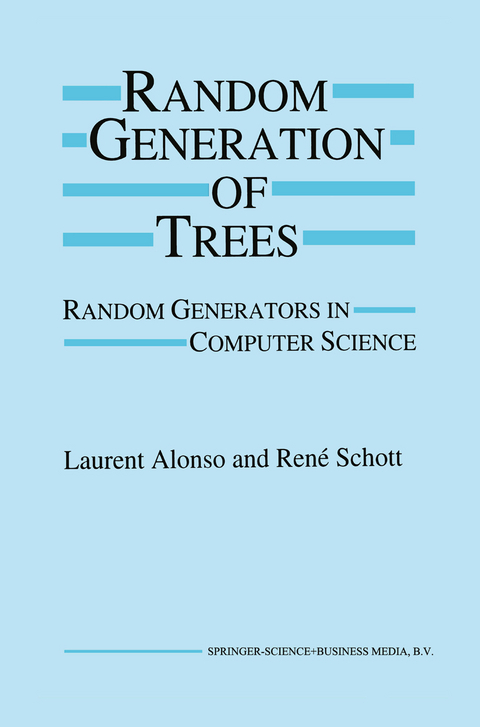
Random Generation of Trees
Random Generators in Computer Science
Seiten
2010
|
Softcover reprint of hardcover 1st ed. 1995
Springer-Verlag New York Inc.
978-1-4419-5150-2 (ISBN)
Springer-Verlag New York Inc.
978-1-4419-5150-2 (ISBN)
Random Generation of Trees is about a field on the crossroads between computer science, combinatorics and probability theory.
Random Generation of Trees is intended for students in computer science and applied mathematics as well as researchers interested in random generation.
Random Generation of Trees is about a field on the crossroads between computer science, combinatorics and probability theory. Computer scientists need random generators for performance analysis, simulation, image synthesis, etc. In this context random generation of trees is of particular interest. The algorithms presented here are efficient and easy to code. Some aspects of Horton--Strahler numbers, programs written in C and pictures are presented in the appendices. The complexity analysis is done rigorously both in the worst and average cases.
Random Generation of Trees is intended for students in computer science and applied mathematics as well as researchers interested in random generation.
Random Generation of Trees is intended for students in computer science and applied mathematics as well as researchers interested in random generation.
Random Generation of Trees is about a field on the crossroads between computer science, combinatorics and probability theory. Computer scientists need random generators for performance analysis, simulation, image synthesis, etc. In this context random generation of trees is of particular interest. The algorithms presented here are efficient and easy to code. Some aspects of Horton--Strahler numbers, programs written in C and pictures are presented in the appendices. The complexity analysis is done rigorously both in the worst and average cases.
Random Generation of Trees is intended for students in computer science and applied mathematics as well as researchers interested in random generation.
1 Introduction.- 2 Notations.- 3 Generation of Simple Kinds of Trees.- 4 Generation Using Bijective Methods.- 5 Generation of Forests of Trees Split into Patterns.- 6 Generation of Colored Trees.- 7 Two Methods of Generation by Rejection.- 8 Arborescences.- 9 Generation of Trees with a Given Height and Some Tricks about Complexity.- 10 A Parallel Algorithm for the Generation of Words.- Appendix 1 Horton-Strahler’s Numbers.- Appendix 2 Algorithms.- 2.1 Generation of binary trees: Rimy’s algorithm.- 2.2 Generation of unary-binary trees: Samaj Lareida’s algorithm.- Appendix 3 Pictures of Trees.- References.
| Erscheint lt. Verlag | 7.12.2010 |
|---|---|
| Zusatzinfo | XII, 208 p. |
| Verlagsort | New York, NY |
| Sprache | englisch |
| Maße | 160 x 240 mm |
| Themenwelt | Mathematik / Informatik ► Informatik ► Theorie / Studium |
| Mathematik / Informatik ► Mathematik ► Graphentheorie | |
| ISBN-10 | 1-4419-5150-4 / 1441951504 |
| ISBN-13 | 978-1-4419-5150-2 / 9781441951502 |
| Zustand | Neuware |
| Haben Sie eine Frage zum Produkt? |
Mehr entdecken
aus dem Bereich
aus dem Bereich
Grundlagen – Anwendungen – Perspektiven
Buch | Softcover (2022)
Springer Vieweg (Verlag)
34,99 €
Teil 2 der gestreckten Abschlussprüfung : Fachinformatiker-/in …
Buch | Softcover (2023)
Europa-Lehrmittel (Verlag)
22,90 €


